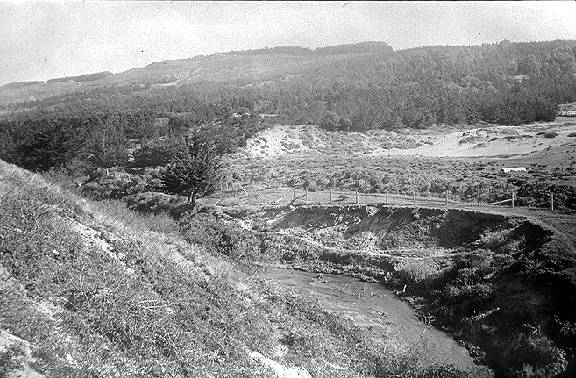Taylor's Buried Waters Blog
A mashup of CIA 511 and DAI 525, this blog will follow Taylor's progress through the course, Fall 2010.
Monday, December 20, 2010
Final Project : Future Indigenous People's Retrospective
Tuesday, November 30, 2010
In the year 2510.....


Tuesday, October 5, 2010
Sutro Library Map Collection
Tuesday, August 31, 2010
SF watershed research
Nine streetcar lines terminated at the park by 1900, providing ample transportation. By 1902, the automobile was also bringing people to the park, but the newfangled method of transportation was initially banned from the park itself because the fast and noisy machines were believed to frighten horses and bicyclists. Finally, in 1904, cars were admitted into the park through the Page Street Gate, although they remained banned from the Concourse until 1912.
Transformed or not, the arid, sandy environment of the park couldn't sustain plants without a constant supply of fresh water. The Spring Valley Water Company had supplied the park's lifeblood for its first seven years, but water was costly, even at the reduced rate the city paid, and the park commission sought a water supply within the park as early as 1886. The ingenious solution was to drill wells near the salty Pacific Ocean, (the first suitable one in 1888, followed by two others), pumped by windmills.
Also this:
Most of the water used for landscape watering and for various water features is now provided by groundwater from the City's Westside Basin Aquifer. However, the use of highly processed and recycled effluent from the city's sewage treatment plant, located at the beach some miles away to the south near the San Francisco Zoo is planned for the near future.
From the Found SF water 'Ships under Financial District' site

From the WIRED article on big disasters:
The region’s transportation infrastructure will take a major hit. More than a thousand roads could be closed. The Oakland and San Francisco International Airports, as well as the Port of Oakland, all lie on top of man-made fill, which is prone to liquefaction — where sediment acts like a liquid when shaken causing structures to founder.
Damage to the water delivery system may be the most worrisome because the Hetch Hetchy aqueduct, which supplies water for 2.4 million people, crosses the Hayward fault and could be ruptured in a major earthquake. As in the 1906 earthquake, damaged gas lines could start fires, which will be difficult to fight without a working water supply. And what water there is will need to be pumped to the firefighters using electricity that will likely be out in the immediate aftermath of the quake.
Read More http://www.wired.com/wiredscience/2008/10/california-is-d/#ixzz0yDkkGj9d
Lobos Creek, seen here in 1958, which drains to Baker Beach, is one of only two creeks that still run above ground in San Francisco. It provides 4 million gallons a day of fresh water to the Presidio.
This is from FoundSF's Clean Little Secret
Those San Franciscans with a more intimate sense of history talk about its creeks—Lobos, Islais, and Mission Creeks being the best known. These and other surface creeks and tributaries flowed unimpeded in the city’s early decades. Spanning many centuries before that, five or six permanent villages were located along their banks. These are not seasonal creeks. The flowing surface waterways of San Francisco’s past were year-round affairs, a detail that can be difficult to comprehend in a city which receives no rain for more than half of each year. In an article I wrote in 1994 about the “Wiggle,” a stream-flattened valley favored by bicyclists intent on bypassing hills, I mistakenly implied that Sans Souci Creek flowed only in the wet seasons. I never received a single correction, despite the evidence presented (shortly after publication) by a construction hole left gaping all summer at Scott and Haight Streets, where fresh running water could always be seen.
Valley through which "The Wiggle" passes in today's urban landscape.
Photo: Carleton Watkins, 1866, taken from Orphan Asylum near Mint Hill; Greg Gaar Collection, San Francisco, CA













